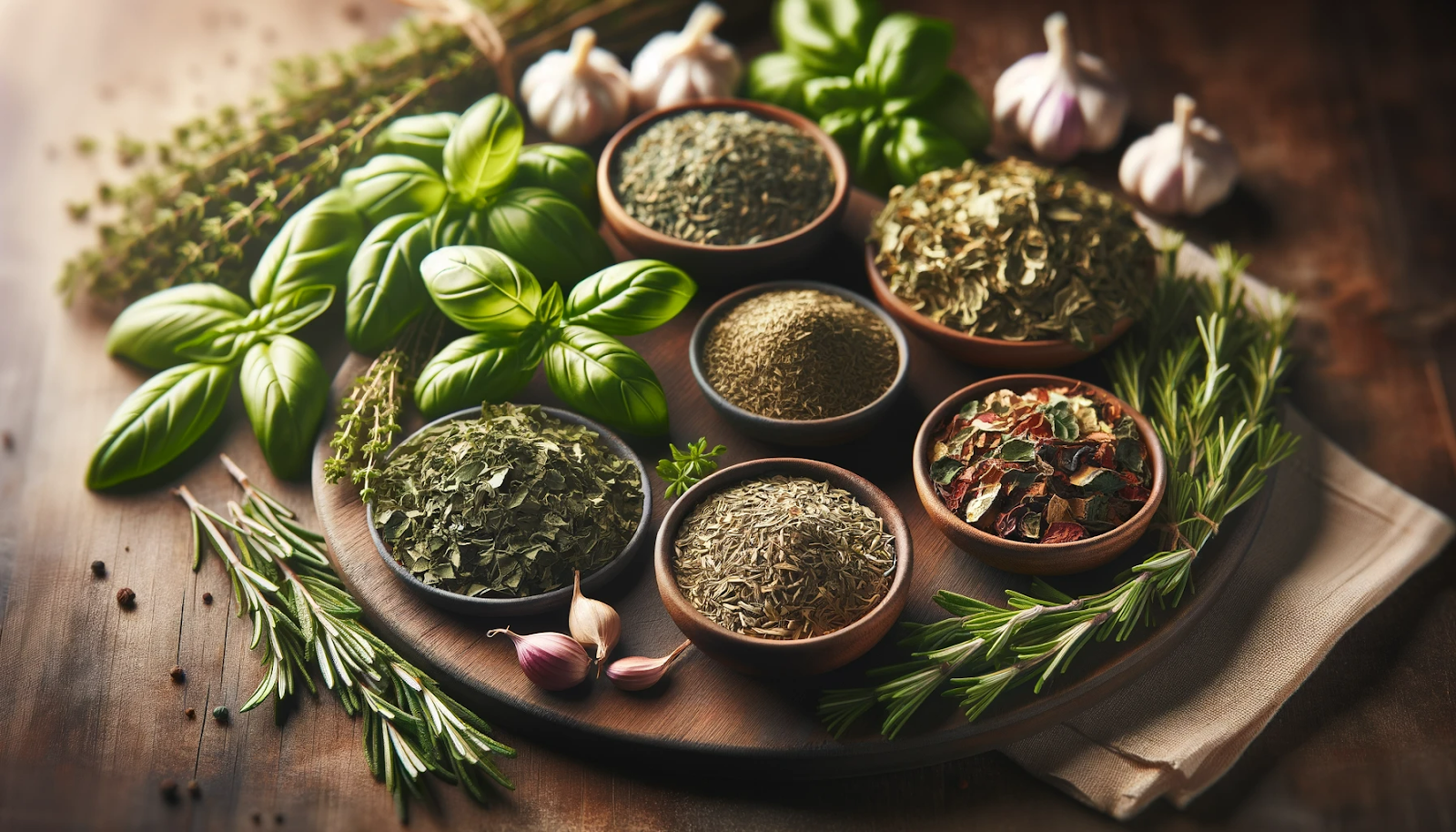Understanding the Ratio
When you find yourself in a situation where you need to replace fresh herbs with dried ones, the rule of thumb is to use a third of the quantity specified for fresh herbs. Dried herbs possess a more concentrated flavor compared to their fresh counterparts due to the lack of moisture, making them more potent.Applying the Rule
When substituting dried herbs for fresh herbs in a recipe, a general rule of thumb is to use about one-third of the amount of fresh herbs called for. Dried herbs are more concentrated and potent than fresh herbs.For instance, if a recipe requires a 1/2 cup of fresh basil, you would substitute with approximately 2 tablespoons and 2 teaspoons of dried basil. Similarly, for a 1/2 cup of fresh parsley, use about 2 tablespoons and 2 teaspoons of dried parsley.
Adapt and Taste
Remember that these measurements are guidelines, and the final adjustment should be based on your personal taste preferences and the specific requirements of the dish. You might want to add the dried herbs gradually, tasting as you go, to ensure that the dish doesn’t become overly seasoned.Timing is Everything
In the symphony of flavors that culminate in a perfect dish, the timing of adding herbs plays a conductor’s role. When using dried herbs, their introduction earlier in the cooking process is crucial. Dried herbs benefit immensely from longer cooking times, allowing them to rehydrate and gradually release their concentrated flavors into the dish, thereby infusing it with a more robust and rounded aroma.The application of heat over time helps in softening the tougher texture of dried herbs, maximizing their contribution to the dish’s flavor profile. In contrast, fresh herbs, with their delicate aromas and softer textures, are usually best added towards the end of the cooking process. This approach helps in preserving their essential oils, freshness, and vibrant colors, preventing them from becoming overcooked and losing their aromatic potency.
Moreover, the consideration of the cooking method—whether it’s simmering, baking, or slow-cooking—also influences the timing of adding herbs. In recipes involving shorter cooking times or lower heat, dried herbs can be added a bit later, adjusting based on the limited time they have to impart their flavors.
Versatility of Herbs
Resilient herbs such as oregano, thyme, and rosemary retain their robust flavors well when dried, standing as strong substitutes for their fresh counterparts. However, subtler herbs like cilantro and parsley tend to lose a significant amount of their vibrant freshness when dried, leading to a somewhat muted or altered essence. Basil, too, undergoes a transformation, its sweet and peppery freshness mellowing somewhat through the drying process. Similar nuances are observed with chives, which, when dried, tend to lose some of their characteristic onion-like pungency. Mint, another example, manifests a more concentrated essence when dried, albeit with a slight loss of its refreshing coolness. Tarragon’s delicate anise-like subtlety is also somewhat diminished in its dried form. Awareness of these individual characteristics is crucial, preparing you for variations and enabling thoughtful adjustments in recipes to achieve the desired culinary outcomes. This knowledge empowers the substitution process, ensuring that the chosen herbs contribute effectively to the dish's overall flavor profile.Hydrating Dried Herbs For Uncooked Recipes
Hydrating dried herbs is a simple yet essential technique when incorporating them into no-cook recipes. Begin by precisely measuring the dried herbs, keeping in mind their heightened potency. Warm water is then gently poured over the herbs, facilitating the release of their intrinsic aromas and oils. Typically, allowing the herbs to soak for about 5 to 10 minutes in the warm water is sufficient for them to rehydrate and plump up.Following the hydration process, drain the herbs of excess water using a fine sieve or mesh to ensure they are well-drained and not overly saturated. If needed, gently pat them dry using a paper towel to remove any lingering moisture, ensuring that they are ready to impart their full flavor to your dish.
Once prepared, these refreshed herbs can be seamlessly integrated into your recipe, akin to fresh herbs, allowing their rejuvenated flavors to shine vividly. It’s advisable to use the rehydrated herbs immediately after preparation, ensuring that their revitalized flavors and aromas are captured at their peak in your culinary creation. This approach ensures that even without cooking, the dried herbs will significantly contribute to the depth and complexity of your dish’s flavor profile.





